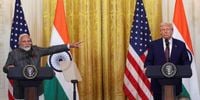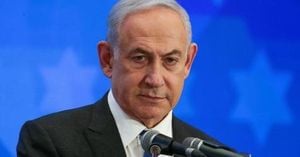In a dramatic turn in global diplomacy, the relationship between India and China—two of the world’s most populous and economically dynamic nations—has entered a new phase, marked by renewed engagement and unexpected strategic recalibrations. At the same time, the once-celebrated partnership between Indian Prime Minister Narendra Modi and U.S. President Donald Trump has deteriorated sharply, sending ripples across the international stage and prompting both countries to reconsider their foreign policy priorities.
The latest chapter in this evolving saga began on August 19, 2025, when Chinese Foreign Minister Wang Yi arrived in New Delhi for high-level meetings with Prime Minister Modi, External Affairs Minister Subrahmanyam Jaishankar, and National Security Adviser Ajit Doval. According to South China Morning Post, Wang’s visit “renewed the momentum of high-level exchanges between China and India and paved the way for Modi’s visit to China for the Shanghai Cooperation Organisation (SCO) summit at the end of August.”
This diplomatic engagement comes after a period of frosty relations, rooted primarily in the unresolved territorial disputes that have long dogged the two neighbors. The most notable flashpoint was the Galwan Valley clash in June 2020, which resulted in casualties on both sides and a significant deterioration in trust. The psychological scars of that confrontation linger, coloring every subsequent interaction between Beijing and New Delhi.
Yet, recent events suggest that both capitals see a strategic opportunity in moving beyond rivalry. As South China Morning Post notes, “the shifting geopolitical environment has given the two countries a major strategic opportunity to achieve common understandings and reset bilateral relations.” The timing is no accident. The global order is in flux, with economic uncertainty and shifting alliances forcing countries to reconsider old assumptions and forge new paths.
One striking development since the October 2024 BRICS summit in Kazan, Russia—where President Xi Jinping and Prime Minister Modi met face-to-face—has been the initiation of talks to restart direct air services between India and China. These flights, suspended since 2020, have long been a barometer of the relationship’s health. The move was swiftly followed by a mutual agreement to lift travel bans on each other’s citizens in 2025, signaling a thaw in day-to-day exchanges and a willingness to let ordinary people reconnect across borders.
Economic overtures have also surfaced. In July 2025, Niti Aayog, a prominent Indian government think tank, proposed relaxing investment ownership restrictions on Chinese entities—a significant gesture, especially given the recent history of protectionist measures and mutual suspicion. As the South China Morning Post points out, “these overtures are particularly significant against the backdrop of global economic and political uncertainties.”
But why now? Part of the answer lies in the evolving triangle between India, China, and the United States. For years, Washington and New Delhi have cultivated a partnership seen by many as a counterweight to Beijing’s growing influence. The relationship between Modi and Trump, once described as warm and even personal, was on full display during their joint news conference at the White House on February 13, 2025. The two leaders spoke of shared values, economic cooperation, and a vision for a free and open Indo-Pacific.
However, according to Nikkei Asia, “the relationship between U.S. President Donald Trump and Indian Prime Minister Narendra Modi, once considered strong, has plunged into sudden and serious conflict as of August 2025.” What happened? The seeds of discord were sown in April, when U.S. Vice-President J.D. Vance visited India, raising expectations of a deepening strategic partnership. But the situation shifted dramatically when President Trump announced a sharp increase in tariffs on Indian goods—raising them to a staggering 50 percent. This move, described by observers as both unexpected and deeply damaging, “encouraged Delhi’s pivot towards Beijing,” according to South China Morning Post.
The fallout from this tariff decision has been swift and far-reaching. Indian policymakers, long wary of putting all their eggs in one basket, have doubled down on their tradition of strategic autonomy. This doctrine, which seeks to maximize India’s interests by balancing ties with all major powers rather than becoming a pawn in any single bloc, is now guiding New Delhi’s every move. As one Indian official put it, “New Delhi’s strategic autonomy means it will balance ties with all major powers, maximising its own interests without becoming a pawn.”
This balancing act is not without risks. The unresolved border disputes with China—especially the memory of Galwan—remain a source of national trauma and political sensitivity in India. Many in New Delhi’s security establishment remain deeply skeptical of Beijing’s intentions, wary that any rapprochement could be exploited. At the same time, those advocating for closer economic and diplomatic ties argue that engagement, not isolation, is the best way to manage tensions and unlock new opportunities.
On the Chinese side, there is a growing realization that a pragmatic approach is needed if Beijing wants to avoid being encircled by hostile powers. As South China Morning Post editorializes, “Beijing must adopt a pragmatic approach and view New Delhi as a partner in the reform of the regional and global order.” Restarting talks on India’s participation in the Regional Comprehensive Economic Partnership (RCEP) is one avenue being explored, with the hope that economic interdependence can serve as a stabilizing force.
Meanwhile, the rift between Washington and New Delhi is causing concern well beyond the two capitals. As Nikkei Asia reports, “this rift threatens global stability and is influenced by the geopolitical context involving China.” The Quad—an informal grouping of the U.S., India, Japan, and Australia designed to promote security and cooperation in the Indo-Pacific—is now facing fresh strains, as India recalibrates its alliances and priorities.
For ordinary citizens and businesses, these high-level maneuvers have real consequences. The resumption of direct flights and the lifting of travel bans promise to revive tourism, educational exchanges, and cross-border business. Easing investment restrictions could open new avenues for trade and technology collaboration, provided that both sides can manage their differences and build trust.
Yet, the path ahead remains uncertain. The legacy of past conflicts, the unpredictability of global politics, and the domestic pressures facing each leader all loom large. Will the renewed engagement between China and India hold, or will old rivalries resurface? Can New Delhi maintain its cherished strategic autonomy in a world of shifting alliances and economic shocks?
One thing is clear: the decisions made in Beijing, New Delhi, and Washington over the coming months will reverberate far beyond their borders. The stakes could hardly be higher for regional stability, economic growth, and the future of a multipolar world order.
As the world watches, India’s delicate diplomatic dance—balancing old friendships with new opportunities—may well define a new era in Asian and global geopolitics.




